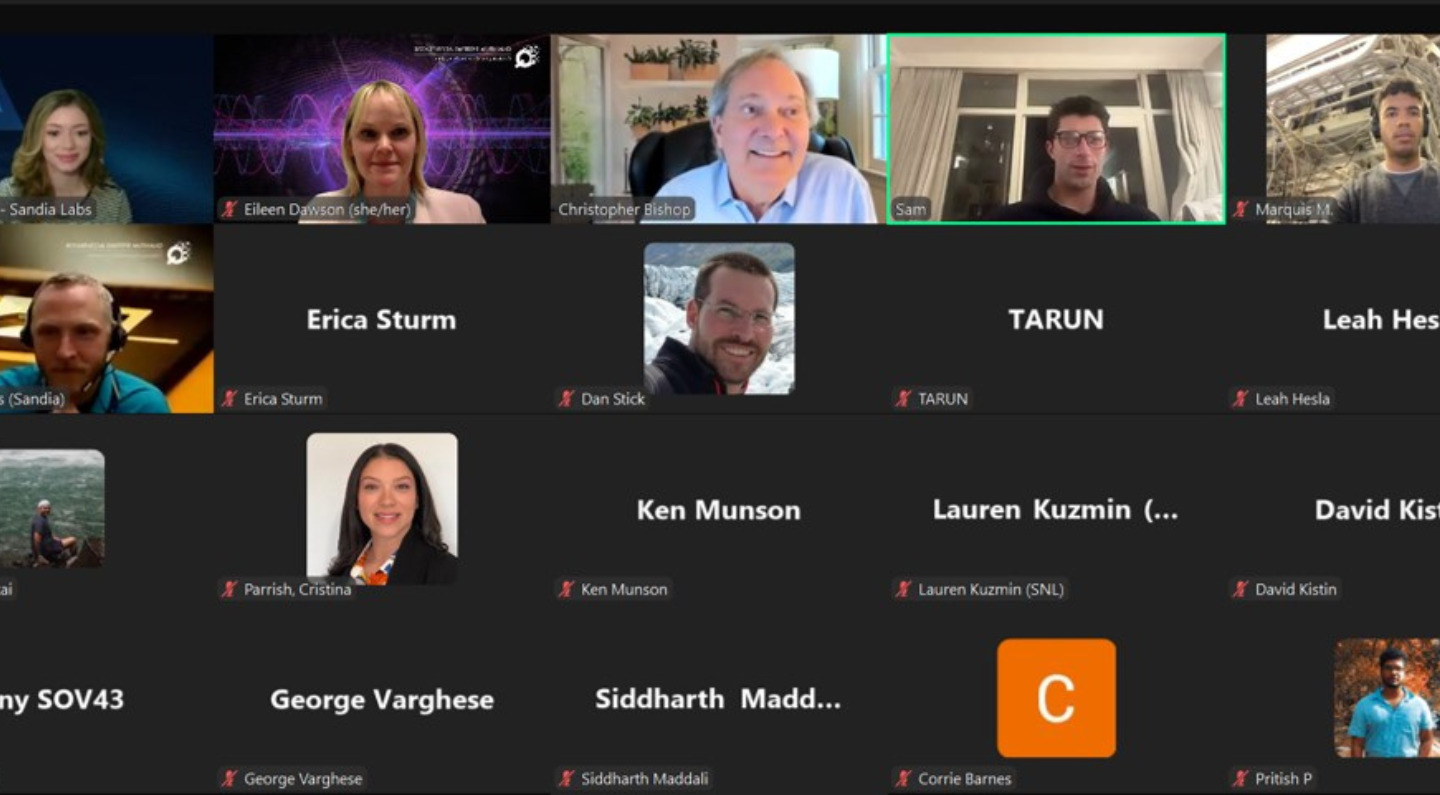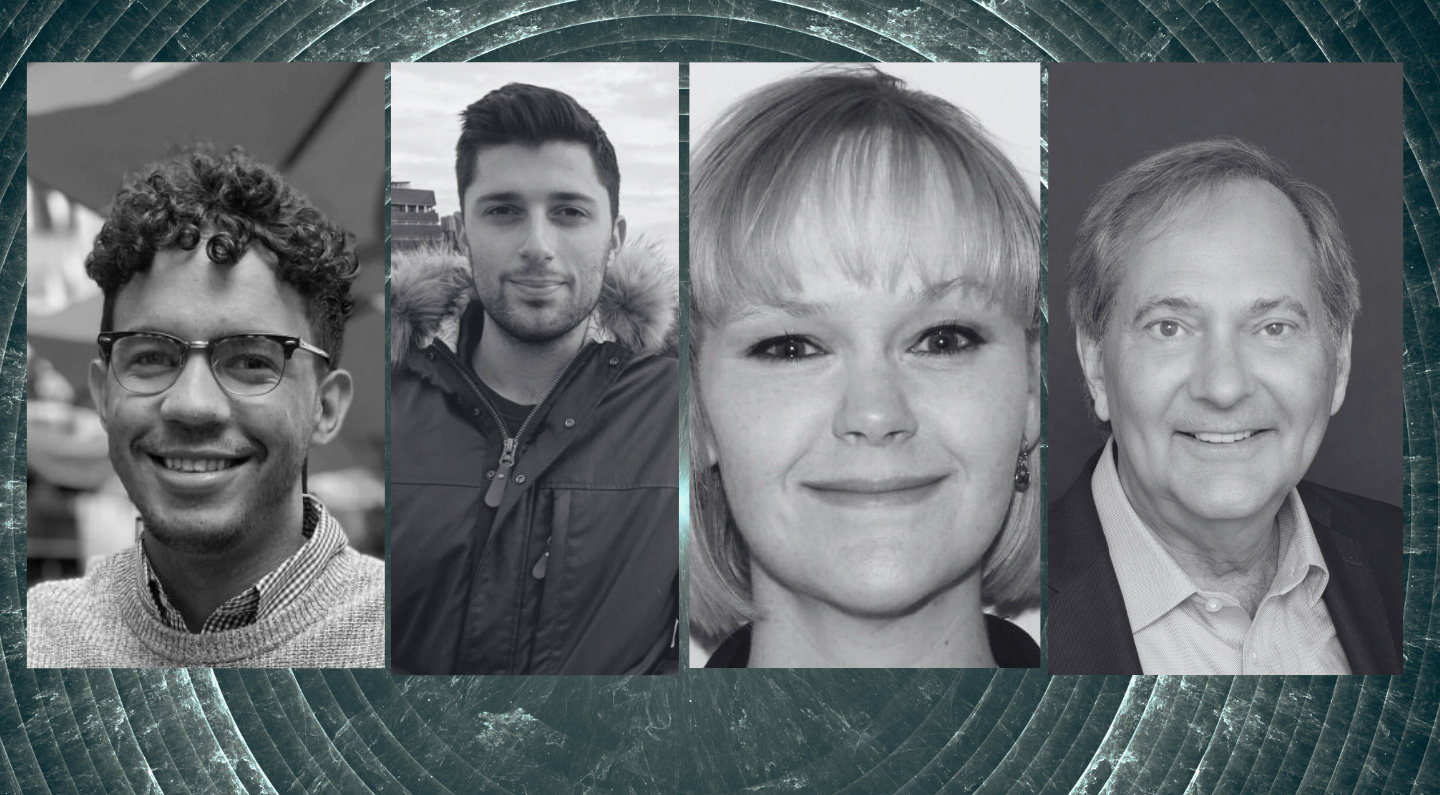Quantum information science (QIS) is a rapidly evolving field, so it is not uncommon for those in the community to have an untraditional career path. How people found their way to careers in quantum science and technology and the barriers they faced in forging their paths was the focus of the most recent “You Belong in Quantum Series” Hosted by Lawrence Berkeley National Laboratory’s Quantum Systems Accelerator (QSA), and led by Sandia National Laboratories, in collaboration with the four U.S. Department of Energy (DOE) National QIS Research Centers, the initiative showcases distinguished leaders in QIS and their perspectives on building a quantum ready workforce. Held virtually on April 30, 2024, the second session of the series, titled “Unique Pathways to Quantum Information Science,” brought together speakers with different backgrounds and experiences to discuss their unique pathways to their current roles in the field.
“The goal of this session is that everyone will come away with something—a new idea, a fresh perspective, a new strategy—that they can apply to help break down silos in their organizations and create stronger career pathways in the field for everyone,” said Sandia National Laboratories’ session moderator, Emily Aragon.
For some of the session participants, finding a career in QIS was an evolution of their interest and education in science and math, though their paths were quite different. For others, finding themselves in QIS was not necessarily about the science but rather about following their interests and growing their careers in general. For all of them, it has been an exciting and ever-changing field of work that they’re thrilled to have discovered.

Now a molecular engineering graduate student at The University of Chicago, session participant Marquis McMillan said he didn’t even think about majoring in science until after his freshman year as an undergraduate at Penn State, where he eventually graduated with a degree in physics. He’s now studying molecular base systems specifically made for addressing qubits. McMillan made his way to QIS through his graduate research, where he was working with IBM quantum systems remotely.
“For me, how I got into physics is the real question to start off with,” said McMillan, “And it was really just a general curiosity—even as a kid, I was always interested in small engineering projects and putting things together and taking them apart, and I was adept in using tools to change things, which led to auto mechanic work in my high school career.”
McMillan didn’t start off as a STEM major in college because his math placement exam said he wasn’t proficient enough to enter a scientific degree program. He started in a remedial math class, which is designed to prepare students for college courses, and was discouraged by a college advisor when he asked if he could take physics. It was after he transferred to Penn State and an advisor took him seriously that he took on the challenge of meeting the criteria to study physics—taking two semesters of work in one semester—and realized he was capable of doing the work and loved the subject.
Moving into quantum research as a graduate student, McMillan has been fascinated by how the different platforms work together in a research setting. “A common theme in quantum systems is not just using one single measurement or interface, but rather all these parts moving together to make one cohesive story,” he said. “It’s so interesting to be in the lab and see all the things that you can apply quantum mechanics to; that’s a big wow moment for me.”

Session participant Samuel Stein is a staff scientist at Pacific Northwest National Lab (PNNL) under the High-Performance Computing group. He works primarily with the Co-design Center for Quantum Advantage (C2QA), and part of his job is bringing together a multidisciplinary team to tackle quantum information science challenges. As a younger student, Stein said he was always interested in math but was steered away from physics and into engineering. He took a turn in a new direction when he studied data science as a graduate student and when he started joining research groups to find a new direction. Stein found quantum science to be rather exciting and engaging. And although he once thought of quantum as just a “buzzword,” the more he learned, the more exciting the subject became. With a chemical engineering and data science background, Stein read a book on QIS, joined research groups focused on quantum computing, and met many interesting people. His quantum science career grew organically from there as he met and learned from experts in the field. After publishing a few papers with the research group, this led to his current position at PNNL.
“Most of the people I met in this field stumbled into it accidentally, for example, via someone saying, ‘hey we have some quantum funding; do you want to join us?’” Stein said. “I met a lot of people and read a lot of books, and so the ball just sort of kept rolling to the point where now I understand a lot of things about quantum that the younger me never thought I would.”

Session participant Eileen Dawson, associate director of operations at QSA, also shared her experiences coming from a deep background in another scientific field. Dawson has a Ph.D. in biomedical engineering and worked in product development at a small startup company. Because it was a small company, one of her roles was technology transfer, which later led to a position at a university. There she worked with different university professors across the physical science field to determine if their ideas had good potential to be patented, and then made connections with outside companies that might want to develop them further. Through that experience, she had the opportunity to work with the DOE as operations director of an Energy Frontier Research Center, which referred her to QSA when she was looking for a new job.
“QSA aligned with a lot of my previous experience, but also with my interest in team science,” said Dawson. “One of the things we really focus on is attacking these large-scale problems that you can’t solve with a single PI or even a single university or location—I could tell that QSA was going to be a really exciting opportunity, and that’s what got me excited about it and how I stepped into QIS.”
Dawson has really enjoyed the collaborative aspect of her work at QSA, working with colleagues with a range of scientific experience and many who are new to the field and excited about the possibilities.

The session’s fourth participant, Christopher Bishop, is the Chief Reinvention Officer at Improvising Careers and host of the “Quantum Tech Pod” podcast. He calls himself a nonlinear multimodal careerist – he is a TEDx speaker, ex-IBMer, former touring rock musician, jingle producer, future workplace consultant, deep tech emcee, and university guest lecturer on the future of work. With a degree in German literature, his path to QIS may be the most unusual. A self-professed “tech geek,” Bishop worked in various roles at IBM for 15 years. After he attended a quantum technology event a few years ago, he was immediately captivated and has been focused on quantum science ever since.
“I think the science is amazing,” he said. “Some people say it’s the most powerful technology humans have ever created. What gets me going is the tremendous potential. The global social, cultural, and business impact of this technology will be remarkable.”

All the participants expressed optimism and enthusiasm about the potential of quantum computing, a big part of what keeps them in the field, mentioning how it could revolutionize various fields, including healthcare, space travel, materials science, chemistry, and biology. They spent a good deal of time at the end of the discussion answering questions from the audience about QIS, focusing on the importance of building the quantum workforce and starting with education at an earlier stage—how to get into the field, what to study, and career pathways.
For more information and resources, check out the available openings in QSA: https://osqs.quantumsystemsaccelerator.org/quantum-jobs.
To read about the five DOE National Quantum Information Science Research Centers, visit: https://quantumsystemsaccelerator.org/team/national-qis-research-centers/
Lawrence Berkeley National Laboratory (Berkeley Lab) is committed to delivering solutions for humankind through research in clean energy, a healthy planet, and discovery science. Founded in 1931 on the belief that the biggest problems are best addressed by teams, Berkeley Lab and its scientists have been recognized with 16 Nobel Prizes. Researchers from around the world rely on the lab’s world-class scientific facilities for their own pioneering research. Berkeley Lab is a multiprogram national laboratory managed by the University of California for the U.S. Department of Energy’s Office of Science.
DOE’s Office of Science is the single largest supporter of basic research in the physical sciences in the United States, and is working to address some of the most pressing challenges of our time. For more information, please visit energy.gov/science.
Sandia National Laboratories is a multimission laboratory operated by National Technology and Engineering Solutions of Sandia LLC, a wholly owned subsidiary of Honeywell International Inc., for the U.S. Department of Energy’s National Nuclear Security Administration. Sandia Labs has major research and development responsibilities in nuclear deterrence, global security, defense, energy technologies and economic competitiveness, with main facilities in Albuquerque, New Mexico, and Livermore, California.
The Quantum Systems Accelerator (QSA) is one of the five National Quantum Information Science Research Centers funded by the U.S. Department of Energy Office of Science. Led by Lawrence Berkeley National Laboratory (Berkeley Lab) and with Sandia National Laboratories as lead partner, QSA catalyzes national leadership in quantum information science to co-design the algorithms, quantum devices, and engineering solutions needed to deliver certified quantum advantage in scientific applications. QSA brings together dozens of scientists who are pioneers of many of today’s unique quantum engineering and fabrication capabilities. In addition to industry and academic partners across the world, 15 institutions are part of QSA: Lawrence Berkeley National Laboratory, Sandia National Laboratories, University of Colorado at Boulder, MIT Lincoln Laboratory, Caltech, Duke University, Harvard University, Massachusetts Institute of Technology, Tufts University, UC Berkeley, University of Maryland, University of New Mexico, University of Southern California, UT Austin, and Canada’s Université de Sherbrooke. For more information, please visit https://quantumsystemsaccelerator.org/
